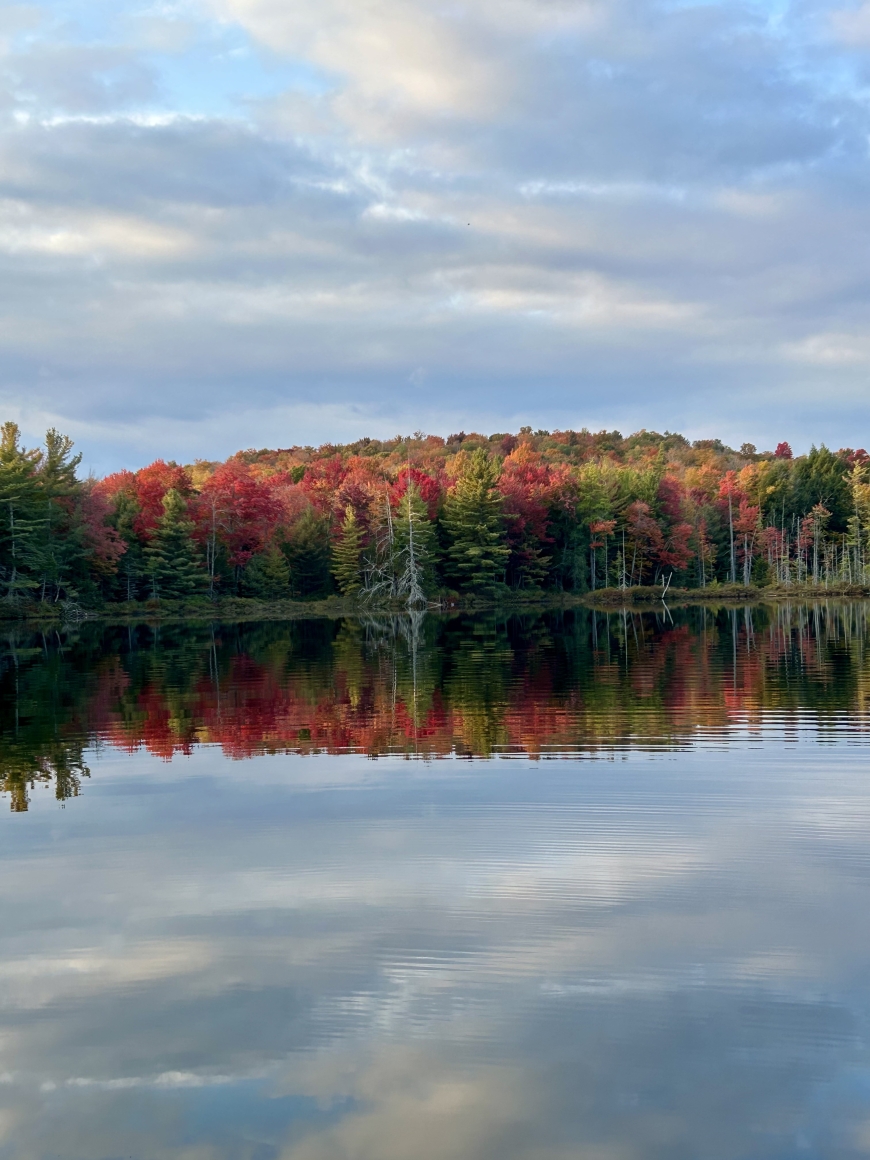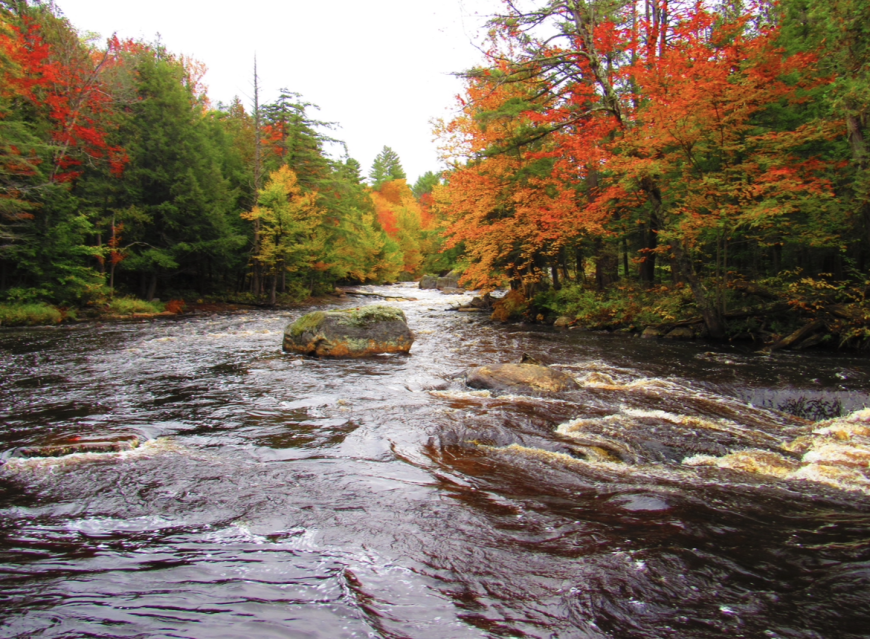



The Colors of Distress
Recent studies show that trained dogs can sense Parkinson’s disease, diabetes, many forms of cancer, and other serious ailments long before symptoms show up. We may not be able to match such an impressive feat, but it turns out we’re not entirely inept when it comes to prescient diagnostics. There are two simple ways to detect grave illness in trees before they start looking overtly ill. The catch is that it’s only possible to do this in late summer when leaves start to change color.
The most important means of sniffing out sick trees is the presence of early leaf color. Although the autumn display our hardwoods put on never fails to impress me, when some individuals are way ahead of the pack, it spells trouble. It’s important to note we’re looking for trees that change ahead of their same-species peers. It doesn’t help to compare aspens with oaks, for example. Premature leaf color is a reliable sign of extremely poor health, even though that tree may have looked OK all summer. The worse a tree’s condition is, the sooner it begins to turn.
This correlation makes more sense when we look at tree biology a bit closer. The solar-powered sugar factories we call trees are prudent savers and meticulous accountants. As a rule, they run a tight ship, and don’t live beyond their means. A tree’s income is sugar, which is converted to starch and deposited in their “bank account” – trunk and root tissues.
Each spring, a deciduous tree withdraws money from their bank and invests in a solar-panel array, known as leaves. Over the summer, trees replenish their starchy savings for the cost of making leaves, and then sock some extra away for emergencies. In addition to sunlight, they need carbon dioxide, enough water and nutrients, and their roots need porous soils so they can breathe.
Ongoing tree expenses include respiration, and maintenance costs like the synthesis of antimicrobial compounds in response to injury. As summer wanes, costs remain the same, but the solar panels can’t make as much sugar due to shorter days. Income falls as the hours of daylight continue to shrink, eventually forcing hardwood trees close for the season.
However, if a tree has had problems getting water or nutrients, or if its root respiration is hindered due to root zone compaction, it struggles even in the best of times. As a result, that tree’s sugar factory will be less efficient compared to others of its kind, and less profitable overall. Poorly drained soils, deicing salt exposure, and mechanical damage also compromise root function.
Landscape trees experience high soil temperatures, restricted root zones, and intense competition from grass. Waterfront trees have other challenges: fluctuating water levels tax root systems, and wash away nutrients, too. Stressed trees reach the break-even point earlier than robust ones, and they will show color first. This is why you often see the first colored leaves on the edges of ponds, rivers or lakes, in addition to along the sides of roads.
Although early color is the best overall sign of a health crisis, palette tells us something as well. Orange (carotenes) and yellow (xanthophylls) are already within the leaves, masked by green chlorophyll. First a little background: In autumn, trees make a waxy layer at the point of attachment between twigs and leaves to seal off the vascular connections. This is to protect the tree from freeze injury. It’s kind of like winterizing a camp – you can’t leave the water spigot on. As leaves are thus choked off, the chlorophyll dies, revealing yellow and orange.
The red-purple range (anthocyanins), though, is another story. Red does not hide under green chlorophyll the way other pigments do! It is entirely absent all summer. Red compounds are manufactured in the fall by some species, maples especially, at significant cost. Science has yet to come up with a plausible explanation for this. The point about red is that a maple showing lots of red color is strong enough to “waste” energy making anthocyanins. But a maple that only has orangey-yellow leaves, but no red, is in real deep doo-doo.
If one of your trees turns color early, or your sugar or soft maple is devoid of red fall foliage, that’s a clear message in tree sign-language that its health is in free-fall. If that is the unfortunate case, it would be a good idea to hire an arborist for an evaluation to see what actions, if any, may be appropriate to help restore it to good health, or at the very least, prolong its life. In general, providing one inch per week of supplemental water to the root zone (twice the branch length) of a stressed tree during dry spells, and mulching its root zone in lieu of grass, will help keep it around longer.
When fall does get here, I hope we can still enjoy the colors as much as we used to.
Paul Hetzler has been an ISA Certified Arborist since 1996, and is a former Cornell Cooperative Extension educator.

